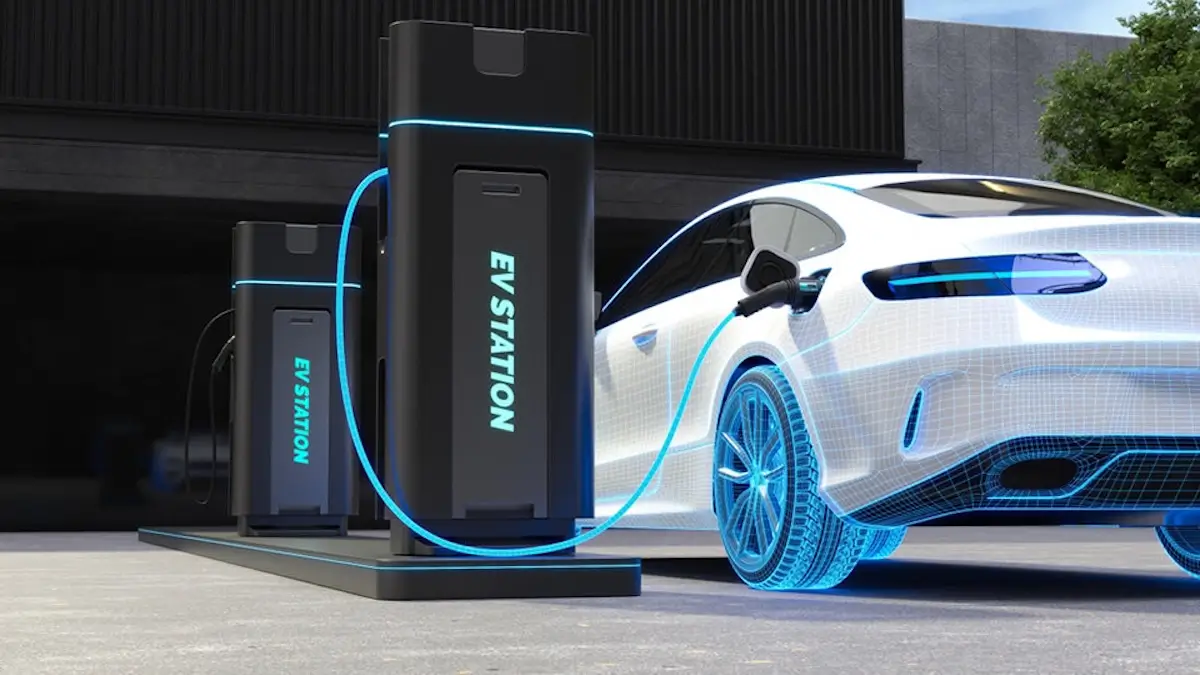The contribution researchers deciphered energy loss of electric cars first appeared at the online magazine Basic Thinking. You can start the day well every morning via our newsletter update.

Researchers from Tokyo have managed to decipher the energy loss of electric cars. They solved a problem that puzzled for a long time. This could make electric cars even more efficient.
Whether electric cars, washing machines or wind turbines: Many things are driven by electric motors. So that you work efficiently, you should waste as little energy as possible. However, around a third of the energy losses are created in the engine itself, more precisely in the material from which the core consists of: the electrical steel.
These losses arise when the magnetic field in the engine repeatedly changes direction. Because that messes up the magnetic areas in the material that have to realign themselves every time.
Energy is lost, comparable to a heavy piece of furniture that is constantly pushed back and forth. This type of energy loss is also called magnetic hysteresis loss.
Energy loss of electric cars: New method brings light into the dark
Scientists of the Tokyo University of Science have now developed a method that can be used to recognize for the first time where and why these losses are created. Because although the problem has been known for decades, it has so far been unclear what exactly is happening inside the material.
The researchers use a combination of modern data analysis and a physical model called Ginzburg-Landau model. This helped to make changes in the material visible as a kind of energy landscape. It is a kind of terrain model with mountains and valleys that show where it is “light” or “difficult” in the material to change the magnetic direction.
The team analyzed microscopic images of the electrical steel and found that there are places in the material where the magnetic areas are particularly difficult to move. These are usually due to the so -called grain boundaries. These are transitions between different crystals in the metal. There, “sponsoring” and “inhibiting” forces meet, which can lead to particularly high energy losses.
Why this is important
With the new method, the researchers were able to automatically recognize the problem areas without having to search them in the microscope by hand.
With the new knowledge, manufacturers of electric motors could improve their materials more targeted and thus build engines that consume less electricity and are more durable. This would not only help with climate protection, but also with the development of better electric cars or more efficient industrial plants.
Also interesting:
- What influence have solar parks on the environment and ecosystems?
- Chatgpt: Delete all chats at once – that’s how it works
- Why e-cars on cargo ships are no greater danger
- Element: Everything you need to know about the WhatsApp alternative
The contribution researchers deciphered energy loss of electric cars first appeared on basic thinking. Follow us too Google News and Flipboard Or subscribe to our update newsletter.
As a Tech Industry expert, I find the research on deciphering the energy loss of electric cars to be incredibly valuable and important. Understanding where and how energy is lost in electric vehicles is crucial for improving their overall efficiency and performance.
By pinpointing areas of energy loss, researchers can work towards developing more efficient battery systems, optimizing the powertrain, and improving overall vehicle design to reduce energy waste. This research has the potential to significantly impact the future of electric vehicles, making them more competitive with traditional internal combustion engine vehicles in terms of range, cost, and overall performance.
Overall, I believe that this research is a critical step towards advancing the adoption of electric vehicles and promoting sustainable transportation solutions. I look forward to seeing the advancements that come from this research and how it will shape the future of the automotive industry.
Credits